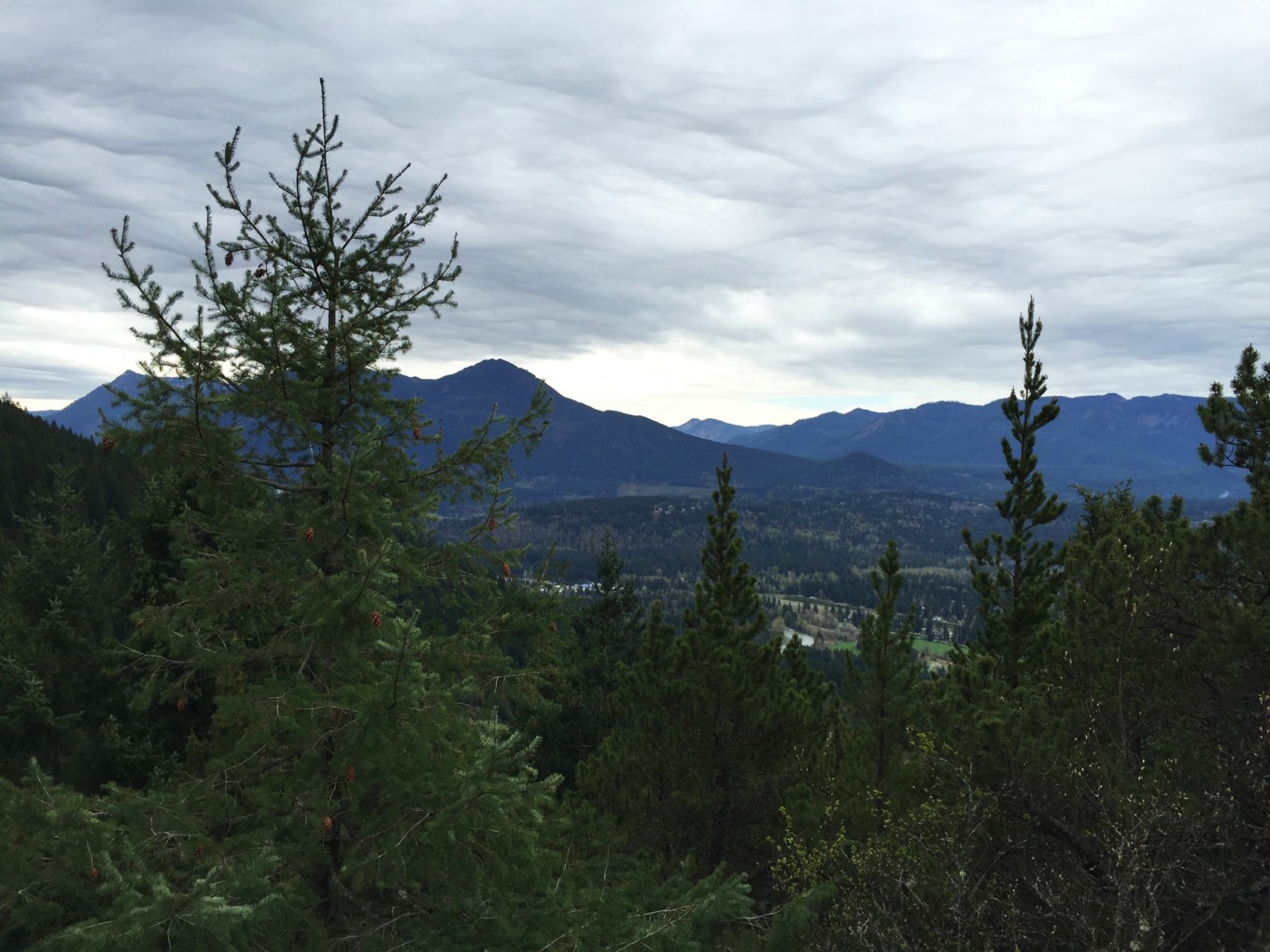 From the top of Little Si.
From the top of Little Si.
Training: Little Si
A week after our last (rainy) hike at Tiger Mountain, we had another pretty fast and easy hike up Little Si, which is Mount Si‘s little neighbor. This one offered a little more elevation gain than Tiger Mountain, but only 1300 feet of elevation gain and just under 5 miles roundtrip meant it wasn’t going to be all too demanding. The steepest sections bookend this trail, with the middle remaining relatively flat with gradual changes in elevation.
Although we were socked in the clouds all morning, there wasn’t any rain fortunately. Temperatures were pretty comfortable in the upper 40s, a little chilly to start with but quickly warmed up once we started our trek along the trail and generated more body heat. After several hikes in, you quickly learn what layering system works best for you, which is especially critical when we’re on Rainier and you want to retain your body temperature without getting too warm and sweating.
The overall pace of the hike up to the summit was good and fairly brisk being in the first, faster group leading the way. The first part of the trail is one of the steeper sections, quickly elevating your body temperature and heart rate and testing your legs a little. About midway up to the summit we passed several rock climbers climbing the popular climbing walls that contain Washington’s highest concentration of 5.13 and 5.14 sport routes. The climbing course I plan on taking next year with the Mountaineers frequently visits this location for course field trips and experience. The trail once again steepens for the last half-mile up to the summit comprised of a pretty small rocky nub that still offers great views of the many other peaks surrounding the North Bend area, including Mount Si to the east.
Luckily the cloud ceilings remained high, more mid-level clouds than low-lying stratus that usually shrouds the mountain peaks around here. You would usually be able to see a considerable amount of snow-capped peaks across the central Cascades this time of year, including Mount Si nearby. But the influx of warm storm systems that plagued us this entire winter season has kept snow levels above 6,000 feet most of the time and resulting is well below average snowpack.
After about a twenty minute break for snacks and socializing with our fellow climbers, we started our decent back down from the summit. We were up and down the trail in about 3-3.5 hours total, which one could definitely cut down to closer to 2.5 or less on their own or a smaller group and at a quicker pace. Overall it was a good hike, and the easier hike allowed us to socialize a little more with those we’ll be climbing Rainier with in a few months.
Next up, Mount Si in three weeks.

